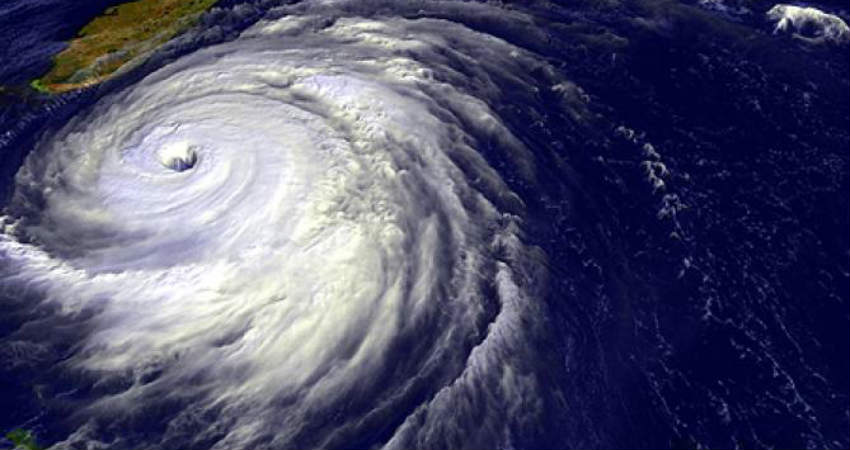
Cyclones in Arabian Sea come up in the Pre Monsoon and Post Monsoon. During both these times, an Anti-Cyclone feature sits over northeastern parts of Arabian Sea which does not allow systems move far to the north.
Instead, they make their way towards the nations of Oman, Somalia and Yemen. In fact, 80 percent of the storms that form in the Arabian Sea during these times, head for these nations as they mostly follow a westward track.
The Countries of Oman and Yemen and Somalia, which are separated by the Gulf of Aden are vulnerable to storms in Pre and Post Monsoon.
Many storms, i.e. around 30 percent of the storms heading towards Oman, Yemen and Somalia, because of high wind shear, low sea surface temperatures, environmental conditions dissipate in the sea itself.
Here is a quick look at the Cyclones between 2011 and 2018, that formed in the Indian seas but headed towards Oman, Yemen and Somalia
2011, Cyclone Keila (Oct 29-Nov 4): Keila was a storm which formed in close proximity of Oman coast in Arabian Sea. It was briefly a Cyclonic storm, forming on November 2, but never went deep inside. Heavy rains were seen in Oman and Keila even managed to take 14 deaths.
2012, Cyclone Murjan (Oct 22-26): Cyclone Murjan originated west of Amini Divi in the Arabian Sea as a small disturbance. On October 24, it intensified into a Cyclonic Storm, and on October 25, it crossed Somali coast. Thus, Bosaso city in Somalia witnessed severe flooding. Murjan became a Depression by October 26.
In the year 2013, no storms formed in the Arabian Sea.
2014, Cyclone Naunak (June 10-14), Cyclone Nilofar (Oct 25-31): In 2014, there were two storms in Arabian Sea, one of them was Naunak which became a Cyclonic storm on June 11. However, the storm was well short of coast, and weakened into the sea due to vertical wind shear, and low sea surface temperatures.
Cyclone Nilofar became a Cyclone on October 29 and had a long sea travel. However, for some time, it remained stationary in the middle of Arabian Sea. The storm had intensified into a Very Severe Cyclonic Storm packing winds of 200 kmph, also developing an eye. The system downgraded in the sea itself due to strong wind shear and unfavourable environmental conditions.
A week before Nilofar, Hudhud had formed in the Bay of Bengal which just like Nilofar downgraded in the sea itself due to having similar condition in the sea.
2015, Cyclone Ashobaa (June 7-12), Cyclone Chapala (Oct 28-Nov 4), Cyclone Megh (Nov 5-10): 2015 was a very active year in view of Cyclones, as three storms had formed. The first being Ashobaa which became a Cyclone on June 8, but it dissipated in the sea itself off the Oman coast, only causing torrential rains along the coast.
Chapala was an extremely severe Cyclonic storm, which headed for Yemen, making landfall over Yemen coast as a Very Severe Cyclonic Storm on Nov 3. It was also the first storm of Hurricane category to hit the Yemen coast.
Megh appeared in quick succession after Chapala and was an extremely severe Cyclonic Storm and made two landfalls, first being over Sokotra Islands. Thereafter, it tracked southwestwards, making landfall over Yemen on November 10 having the strength of a CAT 3 equivalent hurricane.
2016 Cyclone Vardah (Dec 6-19): Vardah had covered a very long journey as it had formed as Cyclone first over Bay of Bengal. Thereafter, it crossed the Peninsula, as a Low-Pressure Area becoming strong again. While Vardah headed for Somalia, it weakened before hitting the nation.
Year 2017 saw no storms in Arabian Sea
2018, Cyclone Mekunu (May 21-27), Cyclone Luban (Oct 6-15): Mekunu formed in the Pre-Monsoon season, and originated over Maldives. It then moved and intensified, developing an eye. Mekunu was symmetric storm in terms of configuration. Mekunu headed for Oman and made a landfall over Salala as an extremely severe Cyclonic Storm packing winds up to 185 kmph.
Cyclone Luban was a Very Severe Cyclonic Storm and had hit Yemen Coast while it was in the midst of a Civil War. Luban had at least caused 14 deaths.
Image Credit:
Please Note: Any information picked from here must be attributed to skymetweather.com


